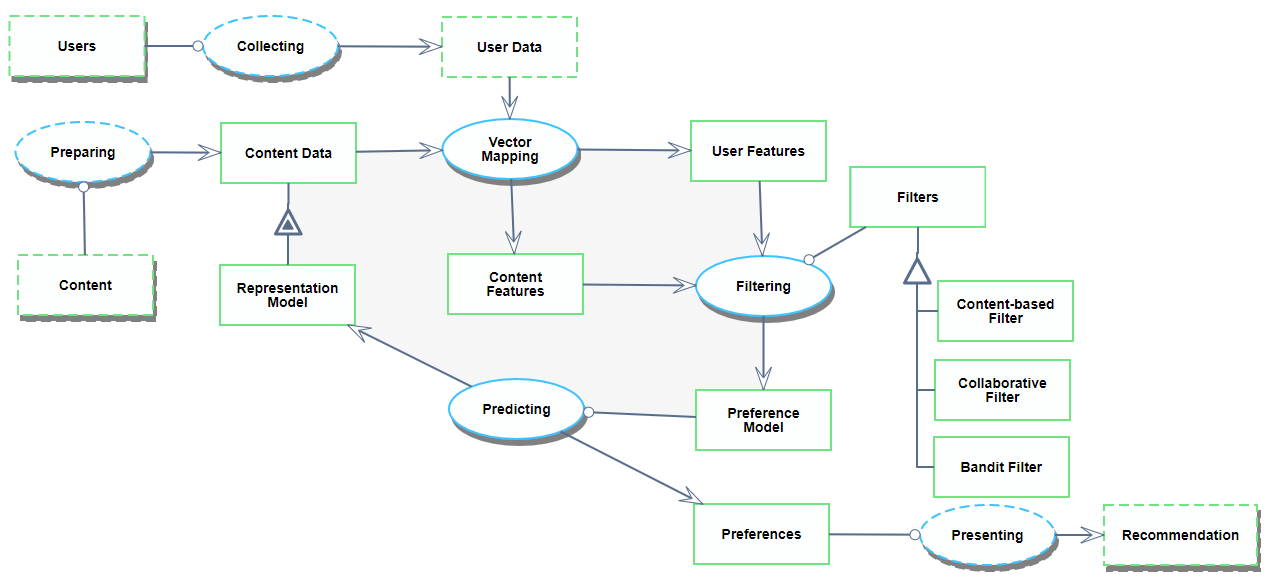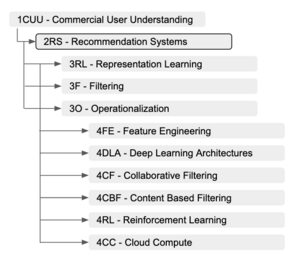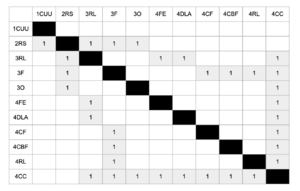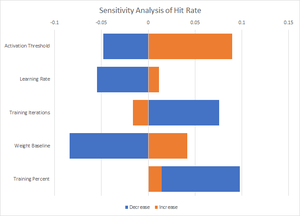Recommendation Systems
Roadmap Overview
Recommendation systems have become a critical engine of the modern digital economy, allowing businesses to exploit user behaviors and similarities to develop specific notions of preference and relevance for their customers. Today, recommendation systems can be found “in the wild” in many different services ubiquitous to daily digital life, filtering the content we see (eg Spotify, Tik Tok, Netflix), products we are advertised (eg Instagram, Amazon), and humans we connect to (eg Tinder, LinkedIn). Against the backdrop of Level-1 commercial user understanding or personalization, we develop a Level-2 roadmap for Recommendation Systems (2RS) below.
OPM Model
DSM Allocation
Figures of Merit
Evaluation of Recommender systems can be divided into , Y ,Z Within accuracy, evaluation metrics can be sub-divided into metrics that provide a measure of pure accuracy (RMSE, MAE), metrics which measure accuracy related to user preferences (Precision, HR), and metrics which measure accuracy in the context of a ranked list showed to users.| FOM | FOM Sub-Category | Definition | Units | Trends (dFOM/dt) | |
|---|---|---|---|---|---|
| RMSE | Prediction Accuracy | Root Mean Squared Error. Accuracy of predicted ratings used in academic assessments of recommender models | [%] | In the literature, proposed recommender systems have driven towards increases in RMSE over time | |
| MAE | Prediction Accuracy | Mean Absolute Error. Accuracy of predicted ratings used in academic assessments of recommender models | [%] | In the literature, proposed recommender systems have driven towards increases in MAE over time | |
| Precision | Accuracy - Usage Prediction | Defined as TP / (TP+FP), TP: True Positive, FP: False Positive | [%] | ||
| Hit Ratio (HR) | Accuracy - Usage Prediction | Also referred to as Recall. Defined as TP / (TP+FN), TP: True Positive, FN: False Negative. As this metric varies with the number of recommendations provides, it is often defined as @N, where N is the number of Top recommendations provided by the system, e.g., HR@10 | [%] | In the literature, proposed recommender systems have driven towards increases in HR over time | |
| NDCG | Accuracy - Utility-based Ranking | Normalized Cumulative Discounted Gain is a measure from information retrieval, where positions are discounted logarithmically. As this metric varies with the number of recommendations provides, it is often defined as @N, where N is the number of Top recommendations provided by the system, e.g., NDCG@10 | [%] | In the literature, proposed recommender systems have driven towards increases in NDCG over time | |
| Quantity | -- | Number of recommendations generated by the system for each user | [recommendations] | The number of recommendations systems can generate has increased as the amount of content in the system has increased | |
| Time to Recommendation | Scalability | Avg time to provide recommendations to one user | [s] | As the accuracy of recommender models has improved, the complexity of these systems has also increased. In turn, these models require increased time to produce recommendations |
} Alignment with Company Strategic DriversPositioning of Company vs. CompetitionTechnical ModelWe had difficulty finding the mathematical basis for a technical model so we decided to determine HR (Hit Rate) sensitivity experimentally. We built a neural network and used it to examine a space of 50 or so user submitted surveys ranking their favorite blockbusters over the past 5 years. We had an average HR of 66% and could improve or worsen the hit rate by fiddling with various parameters as follows:
The model itself can be found at https://github.mit.edu/ebatman/Recommender-System Key Patents and PublicationsPublications Using Collaborative Filtering to Weave an Information Tapestry (Goldberg 1992) - One of the first publications describing a method of collaborative filtering in an application designed to manage huge volumes of electronic mail using human annotations of electronic documents. Netflix Update: Try This at Home (Funk 2006) - Influential blog post proposing a matrix factorization algorithm to represent users and items in a lower dimensional space for the Netflix Prize challenge. By learning latent vectors for users $p_u$ and items $q_i$, matrix factorization estimates user-interaction as the inner product of $p_u^T q_i$. A Survey of Accuracy Evaluation Metrics of Recommendation Tasks (Gunawardana and Shani, 2009) - Identifies 3 main tasks in the field of recommendation, Recommending Good Items, Optimizing Utility, and Predicting Ratings, and discusses different evaluation metrics suitable for each task. For recommending good items, metrics like precision, recall, and false positive are suitable. Interestingly, the authors note that summary metrics of the precision-recall curve such as F-measure or AUC are “useful for comparing algorithms independently of application, but when selecting an algorithm for use in a particular task, it is preferable to make the choice based on a measure that reflects the specific needs at hand.” For utility optimization, the authors suggest the half-life utility score of Breese et al, and for the prediction task, RMSE (and others in this family of metrics) are used. The Netflix Recommender System: Algorithms, Business Value, and Innovation (Gomez-Uribe and Hunt, 2015) - A rare peek into the inner workings of an industry-grade recommender system. Describes the nuances of formulating the recommendation problem correctly for each user-facing feature. For example, the formulation for the Personalized Video Ranker must rank the entire catalog of videos for each genre or subcategory (eg Suspenseful Movies) for each user based on preference. Meanwhile, the Top-N Video Ranker is optimized only for the head of the catalog ranking (rather than the ranking for the entire catalog). Furthermore, recommendation formulations like video-video similarity to support the Because You Watched feature must optimize for content similarity. SAR: Semantic Analysis for Recommendation (Xiao and Meng, 2017) - Presents an algorithm for personalized recommendations based on user transaction history. SAR is a generative model; it creates an item similarity matrix $S$ to estimate item-item relationships, an affinity matrix $A$ to estimate user-item relationships, and then computes recommendation scores by conducting matrix multiplication. Neural Collaborative Filtering (He et al 2017) - NCF is a deep neural matrix factorization model, which ensembles Generalized Matrix Factorization (GMF) and Multi-Layer Perceptron (MLP) to unify the strengths of linearity of MF and non-linearity of MLP for modelling the user–item latent structures. Our first patent is US20170061310A1, featuring a “Method .. and/or system ... that may be utilized to recommend online content to users”. This patent utilizes diffusion based content modeling as the basis for their recommendation service - the idea being that if a user is going to see content through natural content diffusion (ex they are watching a youtube video from the same uploader), it is unnecessary to present that content via a recommendation algorithm. This patent works to measure the distance between two users on a network graph, calculate the time it would take for content to diffuse from node A to node B and then, if the time is below some threshold value it strikes that potential recommendation, allowing the user to discover it naturally. The second patent is US20060195362A1, and is the oldest patent on recommendation systems that we could find (priority to 1998). The general idea of the patent is to provide a mapping between two sets of data, then recommend items from the second data set based on user choices within the first set. This patent is the foundation for all current recommender systems. First published by amazon in 2006 it tracks users purchasing habits and correlates them with each other. Then it extends that correlation over the full population data set and finally extrapolates the extended correlation to provide novel recommendations. The third and final patent we investigated was US20020161664A1 which “generat[es] a set of individualized product recommendations for the consumer”. This patent is unique in that it works to individualize recommendations. Where the other two patents generally look at correlation and try to extrapolate those correlations to new users, this patent describes a mechanism to take said correlations and mould them to the individual receiving said recommendations. The idea behind it being that in addition to the standard mapping that is fed to the neural net; you also make linkages between people who had multiple similar inputs as the targeted individual, and then weight the outputs that those input groups produced more highly. |



